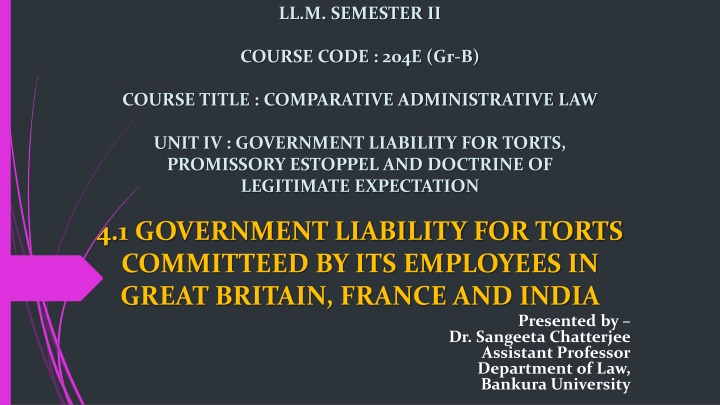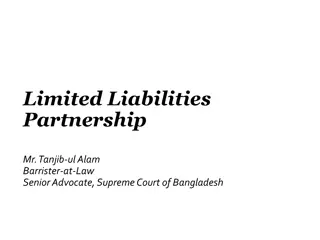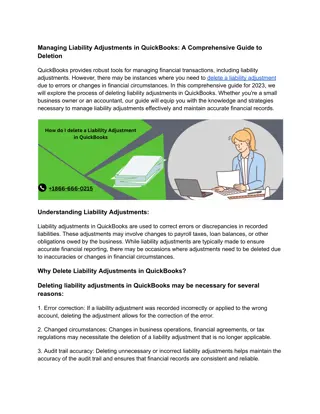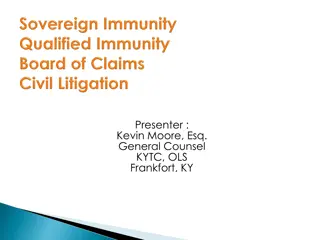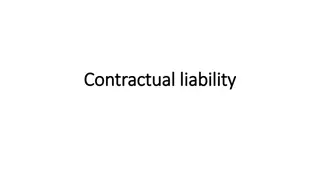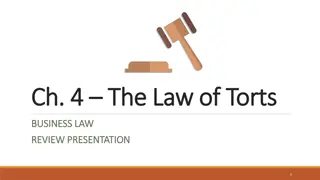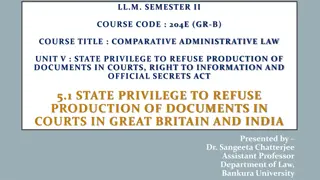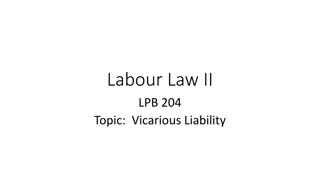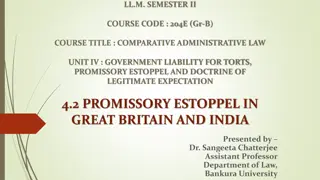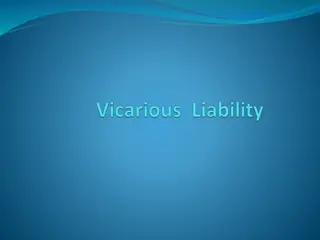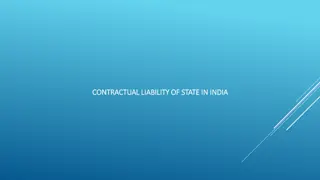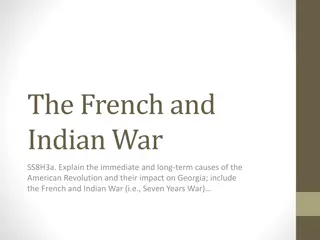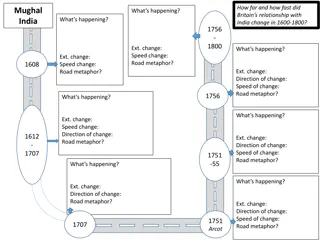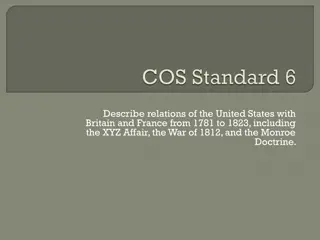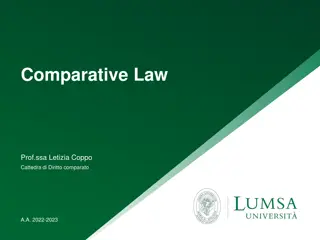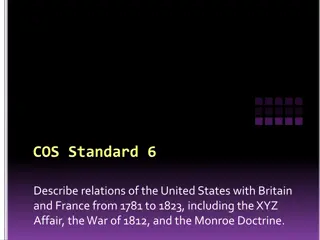Comparative Government Liability for Torts: Great Britain, France, India
This study delves into the government liability for torts committed by its employees in Great Britain, France, and India, examining the evolution of principles and the shift from officer to state liability. It explores the historical backdrop, legal implications, and the position in Great Britain post the Crown Proceedings Act, 1947.
Download Presentation

Please find below an Image/Link to download the presentation.
The content on the website is provided AS IS for your information and personal use only. It may not be sold, licensed, or shared on other websites without obtaining consent from the author.If you encounter any issues during the download, it is possible that the publisher has removed the file from their server.
You are allowed to download the files provided on this website for personal or commercial use, subject to the condition that they are used lawfully. All files are the property of their respective owners.
The content on the website is provided AS IS for your information and personal use only. It may not be sold, licensed, or shared on other websites without obtaining consent from the author.
E N D
Presentation Transcript
LL.M. SEMESTER II COURSE CODE : 204E (Gr-B) COURSE TITLE : COMPARATIVE ADMINISTRATIVE LAW UNIT IV : GOVERNMENT LIABILITY FOR TORTS, PROMISSORY ESTOPPEL AND DOCTRINE OF LEGITIMATE EXPECTATION 4.1 GOVERNMENT LIABILITY FOR TORTS COMMITTEED BY ITS EMPLOYEES IN GREAT BRITAIN, FRANCE AND INDIA Presented by Dr. Sangeeta Chatterjee Assistant Professor Department of Law, Bankura University
INTRODUCTION In any democratic country, where government plays the role of a welfare and service state , the question of government liability evokes a serious response. On the one hand, the concept of an intensive form of government requires active participation of the State in welfareand service activities. But on the other, the concept of governmental liability may havea terrifying effecton such participation. Therefore, a very delicate balance should be maintained between the two.
BACKDROP If a person has been wronged, he may either proceed against the officer concerned or may sue the government on whose behalf theofficerwas acting. Early Common Law firmly recognized the principles of liability of the officers, because they were treated as ordinary citizens. But now it is simply the liability of the government, because theofficers are recognized as the servants of thegovernment. Therefore, government can never escape the liability for the wrong committed by its officers oremployees.
SHIFTING OF THE LIABILITY FROM OFFICER TO STATE With the growth of governmental powers, the shift has been from the officer s liability to State liability , on whose behalf the officeracts. The main reason for such a shift could be the apprehension that the liability may reduce the independence and initiative of the officers. However, the recent trend shows a judicious mix of both these concepts. concept of officer s
LIABILITY OF THE GOVERNMENT FOR TORT OF ITS EMPLOYEES The liability of the government in tort is governed by the principles of public law inherited from British Common Law and the provisions of the Constitution. The whole idea of vicarious liability of the State for the torts committed by its servants is based on three principles : 1) Respondeat Superior (let the principal be liable). 2) Quifacit per alium facit per se (he who acts through another does it himself. 3) Socialisation of Compensation.
POSITION IN GREAT BRITAIN Before 1947 in Britain, the old maxim king can do no wrong was prevalent. According to that doctrine, the King was never responsible for the wrongs committed by its servants. But, the situation changed after 1947 with enactment of the Crown Proceedings Act, 1947. This Act makes the Crown liable for torts committed by its servants and agents and for breach of the common-law duties owed by employers and by owners and occupiers of property. The Act further provides for the liability of the Crown for the breach of statutory duty and in cases of strict liability. However, the Crown is not liable for judges, officers not appointed by the Central Government, post offices and its employees. After passing of the Human Rights Act, 1998 in UK, a new principle of tort based on the duty of care is added in cases of human rights violations.
POSITION IN FRANCE In France, a separate system of an independent public law of governmental liability is flourished beyond the shadow of UK system. The principles of French Model are : 1) Personal Faults. 2) Service Fault. 3) Service-connected Fault. 4) Contribution. 5) Risk Theory. 6) Compensation for governmental refusal to protect the legal interests and rights of the people. 7) Compensation for governmental action imposing statutory unequal sacrifice.
POSITION IN INDIA Article 300 of the Indian Constitution deals with the extent of liability of the Union of India and the government of a State in cases of torts committed by government servants. According to this article, the Government of India and the State Governments may sue or be sued in their names in the cases of tortious liabilityof the State. The Supreme Court of India held that, the Secretary of State for India would be liable for the damages caused by the negligence of Government servants, if the negligent act is not done in theexercise of a sovereign function. The Court has drawn a distinction between acts done in exercise of sovereign function and non-sovereign function . Acts done in exercise of non-sovereign function means the conduct of undertakings which might be carried on by private persons or individuals without having such power.
CASES IN INDIA 1) State of Rajasthan v. Vidyawati, 1962 The Supreme Court held that, the State vicariously liable for the tortcommitted by its servant. 2) Kasturi Lal Ralia Ram Jain v. State of U.P., 1965 The Supreme Court held that, the State is not liable because the functions of arrest and seizure of the property are sovereign functions. The Court further held that, if the act is sovereign, no act of negligence on part of the employees of the State would render the State liable.
CRITICISM AND FUTURE PROPOSITIONS The doctrine of sovereign immunity is an instrument of survival without any rational basis. Any welfare democratic society means equality between the governors and the governed and the socialisation of compensation. The distinction between sovereign and non-sovereign functions is a logical fallacy. Attempt to protect the State should be through budgetary reorganisation and not through shifting the burden to helpless victims. Development of a public law of tort on the basis of French Model is the need of the hour. Socialisation of Compensation must be the foundation of the law relating to governmental liability in tort. Emphasis should be given on statutory regulations, openness and institutional mechanisms to prevent litigations for tort claims.
CONCLUSION The Indian judiciary has failed to show its creativity in the area of governmental liability of tort. It is still following the old and obsolete English principles of private law of tort. In the absence of any public law of tort, private citizens are greatly suffering from loss caused by governmental actions in the public interest. Therefore, development of the public law of tort satisfying the claims of socialisation of compensation is the urgent need of the hour.
REFERENCE : 1.Dr. I. P. Massey, Administrative Law, Eastern Book Company, Lucknow, 8thEdition, 2012.
